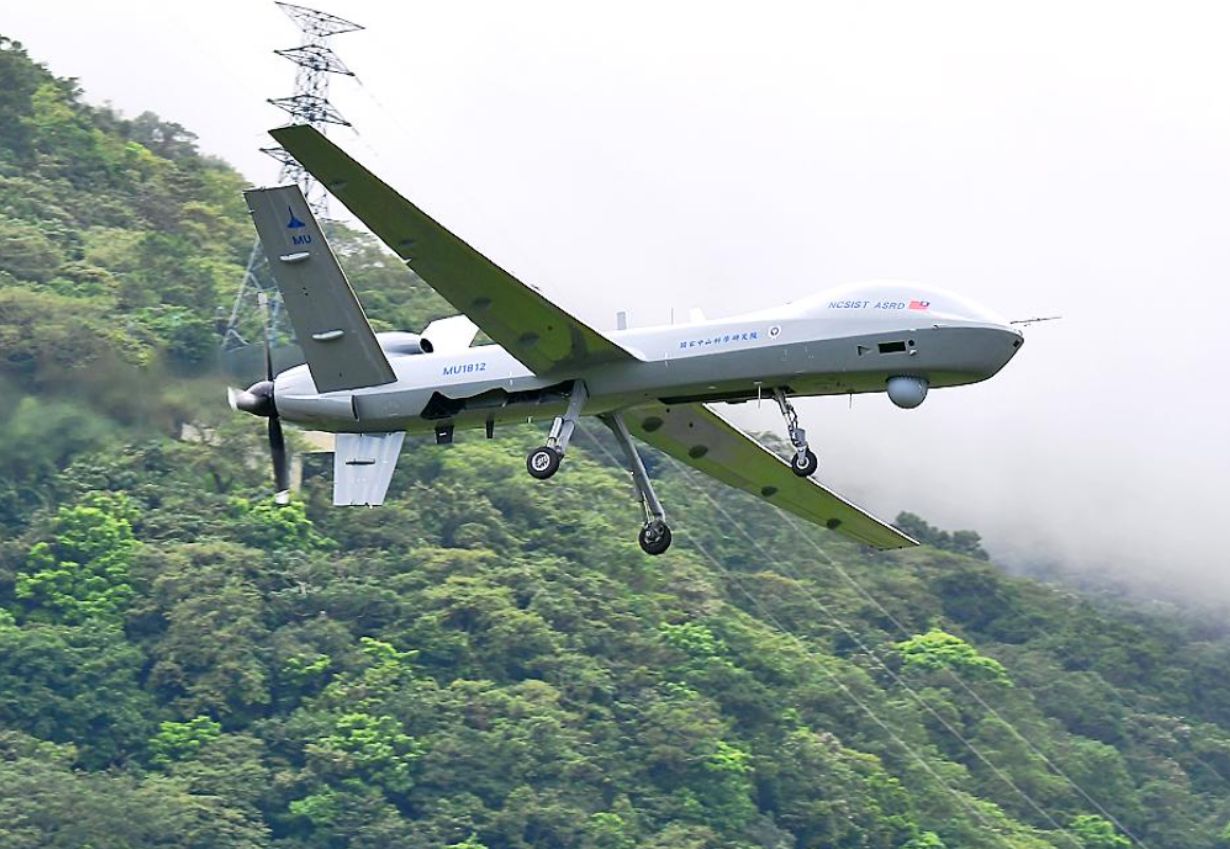A prototype of Taiwan’s homegrown Teng Yun 2 drone, developed by the National Chung-Shan Institute of Science and Technology (NCSIST), had an accident on February 22 after it spun out of control and ended up beside the runway at Hualien Air Base.
The Teng Yun 2 is a medium-altitude long-endurance (MALE) unmanned combat aerial vehicle (UCAV), which is said to resemble the American MQ-1 Predator.
The drone is said to have a range of 1000 kilometers, an endurance of 24 hours, and a service ceiling of 25,000 feet. It features advanced electronic surveillance and interference systems than the Teng Yun drone.
It is compatible with the AGM-114 Hellfire air-to-ground, laser-guided, subsonic missile with anti-tank capacity. However, the missile can also be an air-to-air weapon against helicopters or slow-moving fixed-wing aircraft.
It can also perform intelligence, surveillance, and reconnaissance (ISR) missions during the day and night.
During a test flight on Wednesday, a prototype of #Taiwan's Teng Yun 2 drone experienced damage when it skidded off the runway due to erratic mechanical performance. #TengYun2 #PrototypeProblems pic.twitter.com/yjhw7uBXpH
— TVBS World Taiwan (@tvbsworldtaiwan) February 23, 2023
The Teng Yun 2 performed a 10-hour flight around Taiwan’s air defense identification zone (ADIZ) in June 2022. The mass production of the drone was expected to start this year.
However, the Taiwanese newspaper Liberty Times said the recent accident had become a “great shock” to the Taiwanese Air Force.
The drone was being tested before noon on February 22. During the taxing and take-off process, certain mechanical parts of the drone performed erratically, which prompted the cancellation of the flight as per the standard operating procedures.

However, while decelerating, the aircraft slid off the runway before reaching a standstill. A preliminary investigation found that the landing gear and the propeller had sustained damage in the accident.
The NCSIST transported the drone back to Jiashan Air Base, where the software and hardware components are reportedly being inspected.
Taiwan Boosting Drone Development
The military-owned NCSIST is a leading organization in Taiwan’s push for the development of drones, inspired by the lessons learned from the ongoing war between Ukraine and Russia, where Ukraine, even after one year into the war, continues to resist a numerically superior force.
Earlier this month, the Taiwanese Defense Ministry spokesperson Sun Li-fang said that the island nation is speeding up the development and production of drones.
“Responding to the present enemy threat and using the general experience of drones in the Ukraine-Russia war to construct an asymmetric combat power for our country’s drones, the defense ministry is speeding up research, development, and production of various drones,” Sun said.

Taiwan wants to reduce its reliance on foreign suppliers and has developed its industry, investing US$1.6 million to produce drones.
“Military drones have played an important role in the Ukraine-Russia war as both Russia and Ukraine are using them to locate enemy targets and guide artillery fire towards them,” said Shu Hsiao-Huang, a warfighting concepts analyst at Institute for National Defense and Security Research, Taiwan’s government think tank.
“They will also be effective for Taiwan when it comes to locating enemy targets and guiding the attacks,” he said, adding that it would be equally important to have precise intelligence about the movements of China’s People’s Liberation Army (PLA).
In the event of a Chinese amphibious invasion, if the PLA forces manage to land on the island, the Taiwanese artillery units could destroy the temporary lodgements before they become permanent with the help of “precise intelligence” about the PLA movements and drone-assisted artillery fire.
The ongoing Ukraine war has demonstrated how effective drone-assisted artillery strikes can be, as both the Russian and Ukrainian forces continue to post drone videos on social media showing enemy targets, such as armored vehicles or even self-propelled artillery, being observed for a few seconds before they explode due to an attack by an unseen projectile.
#Ukraine: Two Russian tanks, APC, a KUNG trailer and BMP-3 IFV were destroyed and damaged by high-precision strikes of the Ukrainian 44th Artillery Brigade in the East. pic.twitter.com/WJHNecOun3
— ?? Ukraine Weapons Tracker (@UAWeapons) October 19, 2022
Last year, the PLA released video footage of amphibious assault landings and island-control drills involving marines and other special battle forces. These included at least a dozen ZTD-05 amphibious assault vehicles dispatching marines to attack a mock enemy camp during an island seizure drill.
Soon after the marines destroyed all critical military equipment, airborne soldiers arrived in the area from Z-8 transport helicopters. These airborne troops were reportedly from the Eastern and Southern theater commands (which would be in charge of a “Taiwan reunification” war).
In such a situation, a drone like the Teng Yun 2, armed with an AGM-114 Hellfire missile, could enable the Taiwanese forces to prevent the Chinese troops from landing on the island in the first place by destroying Chinese amphibious armored vehicles and the transport helicopters.
- Contact the author at tanmaykadam700@gmail.com
- Follow EurAsian Times on Google News




